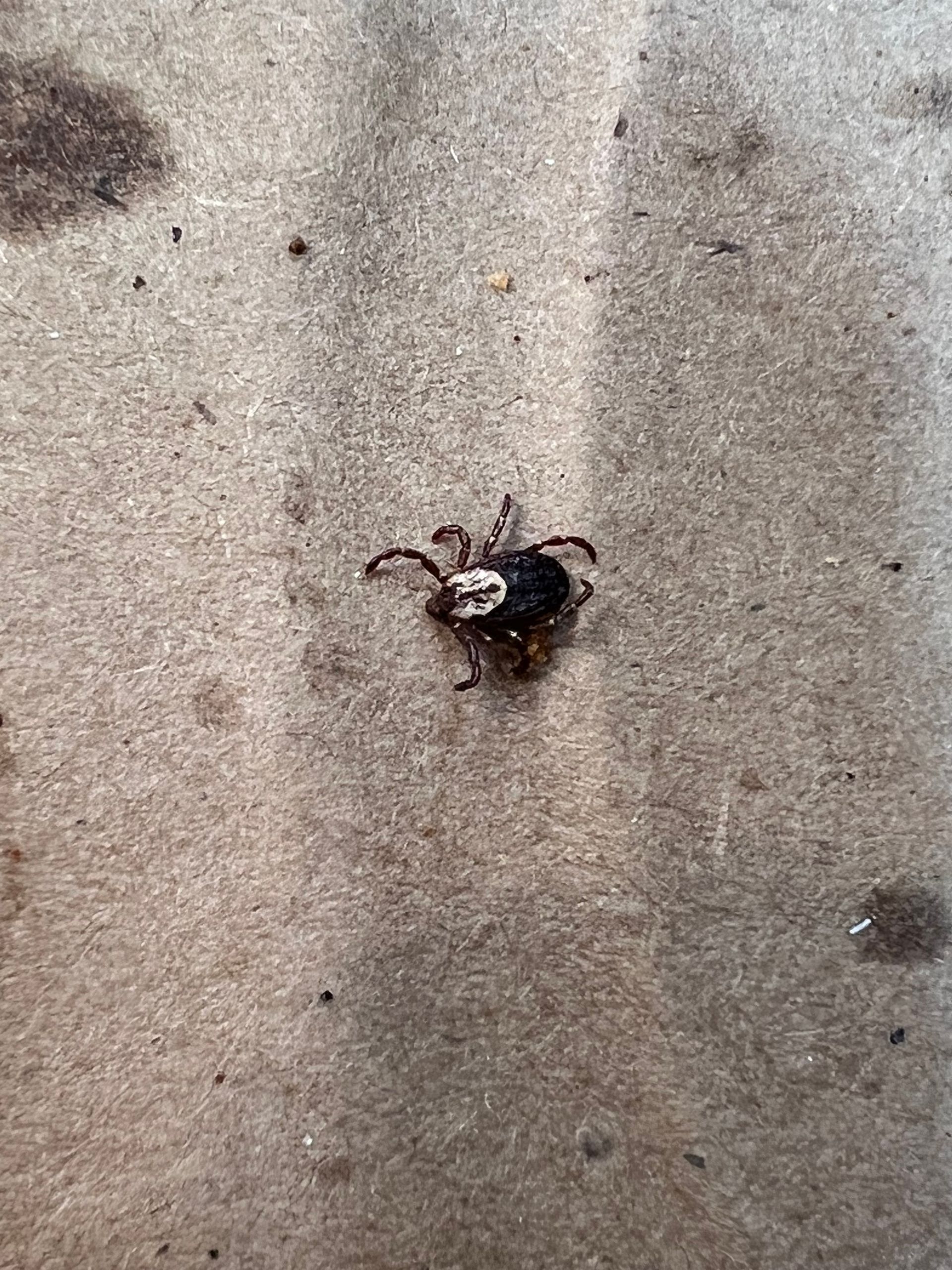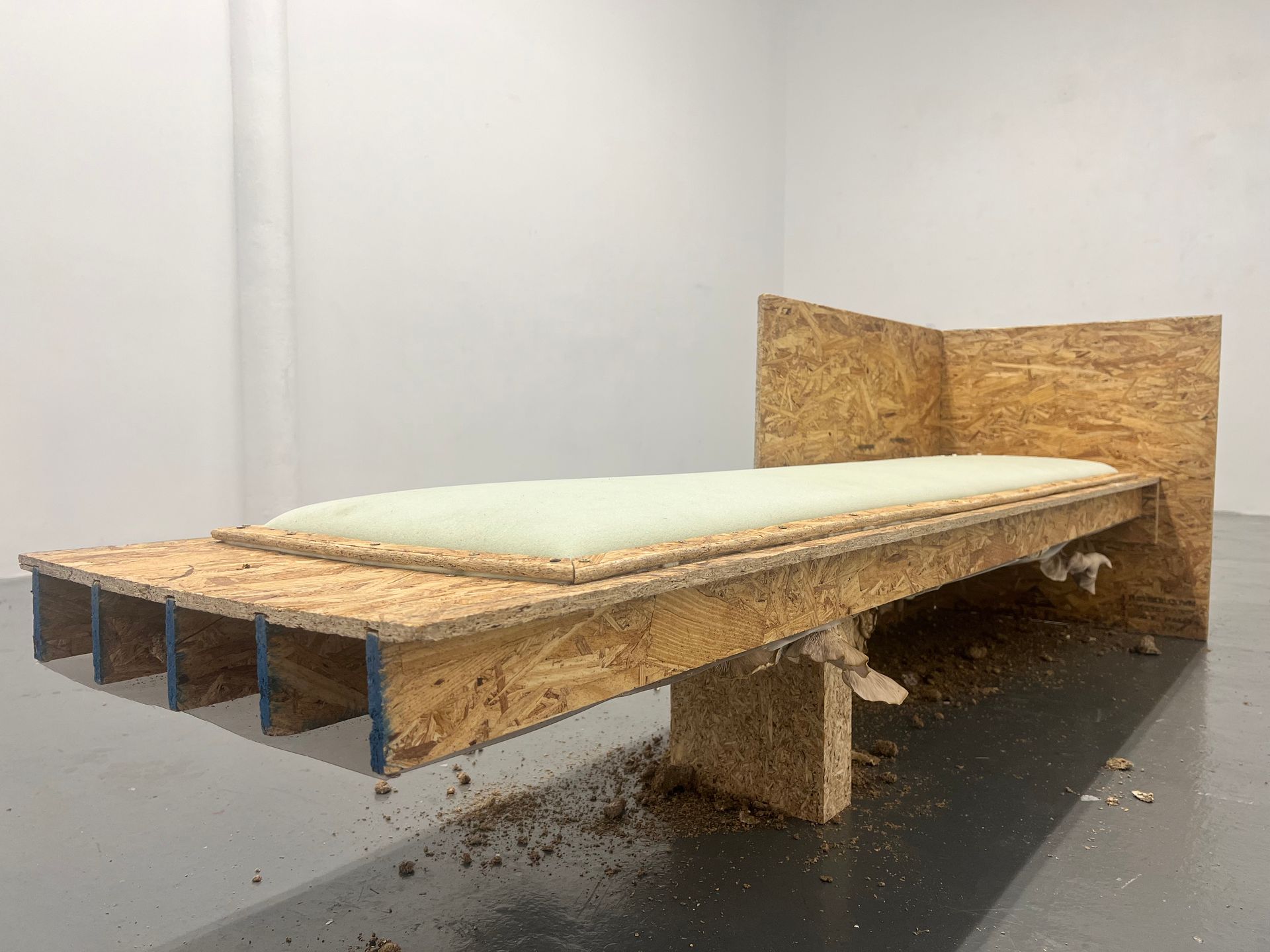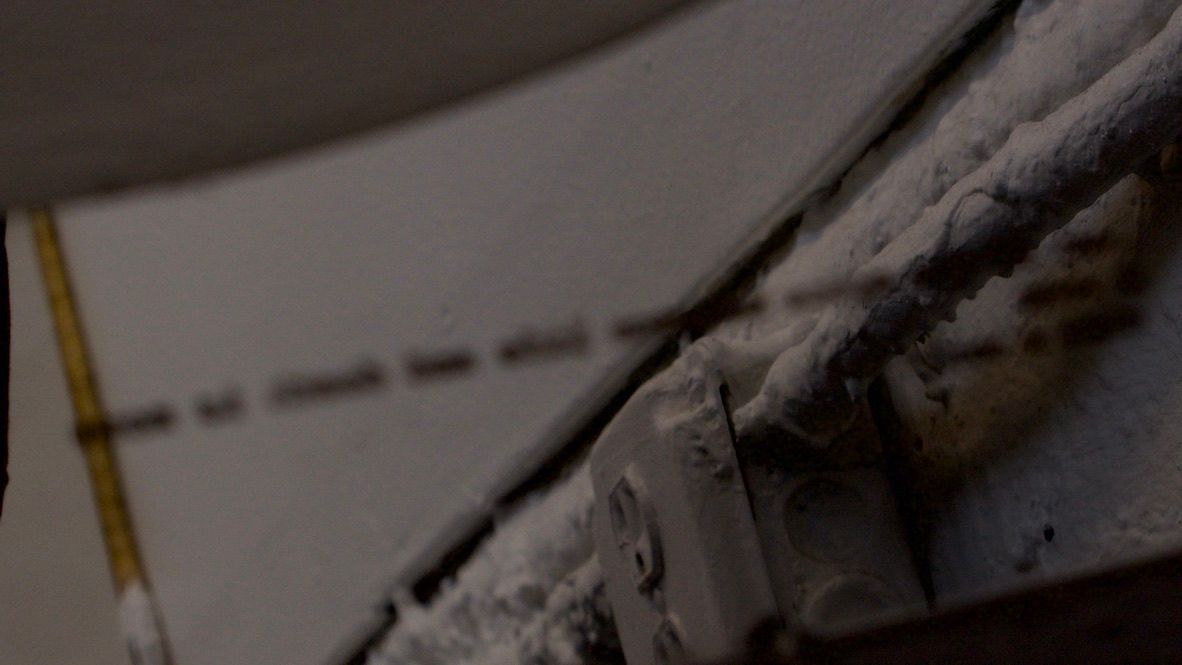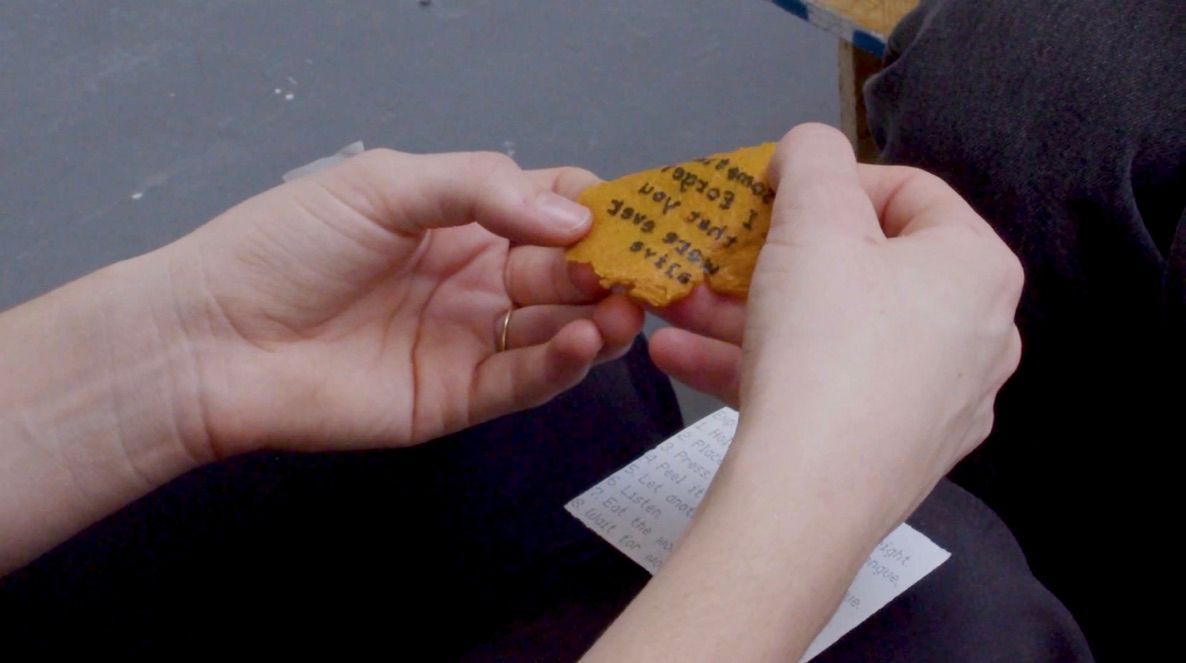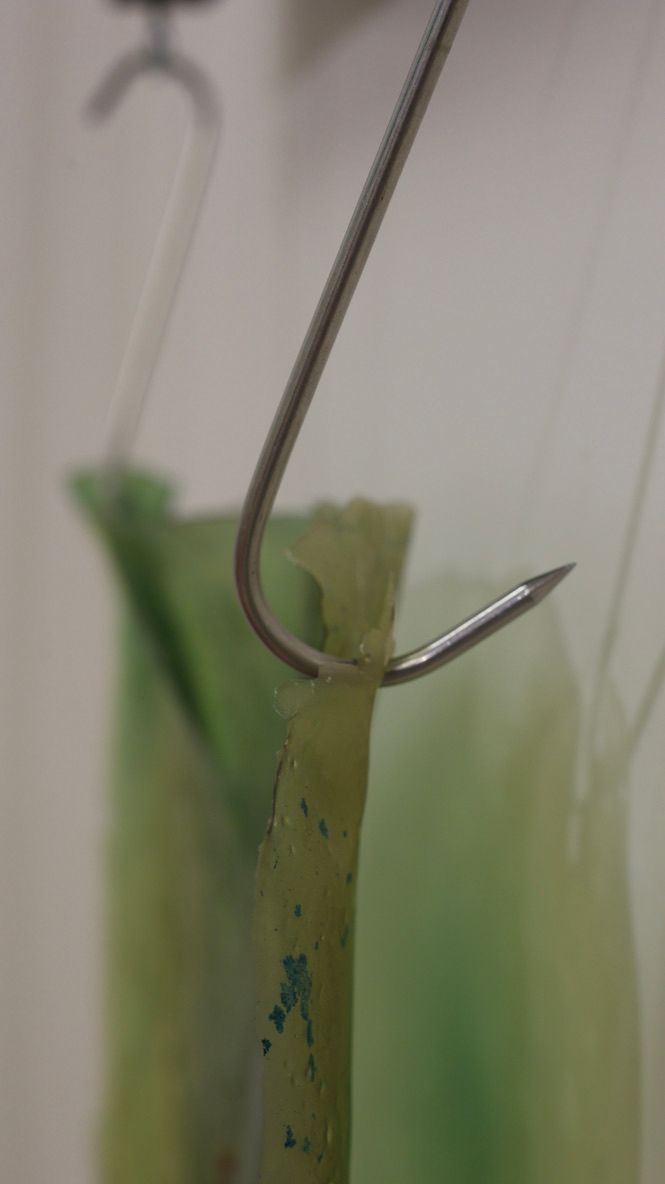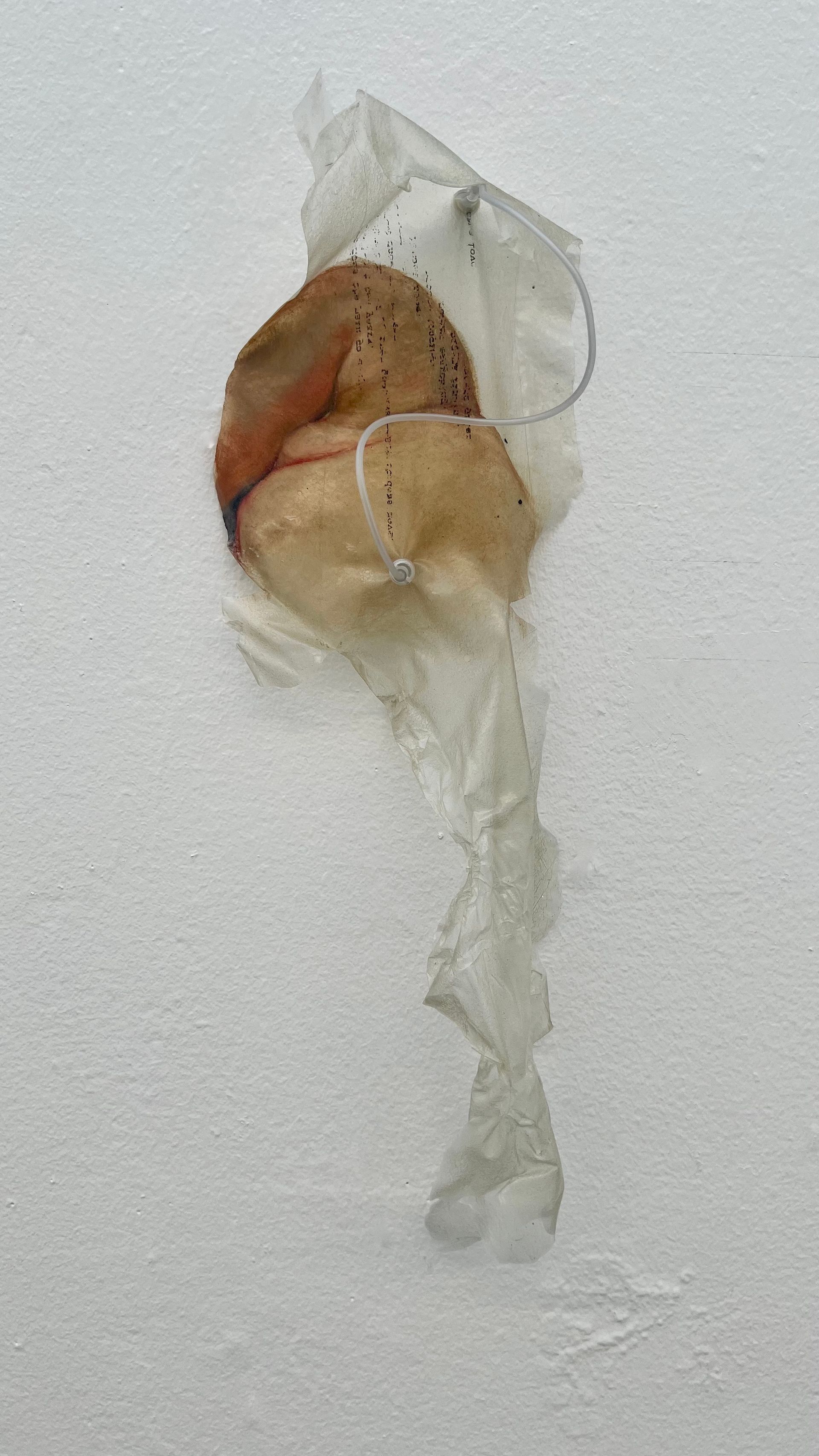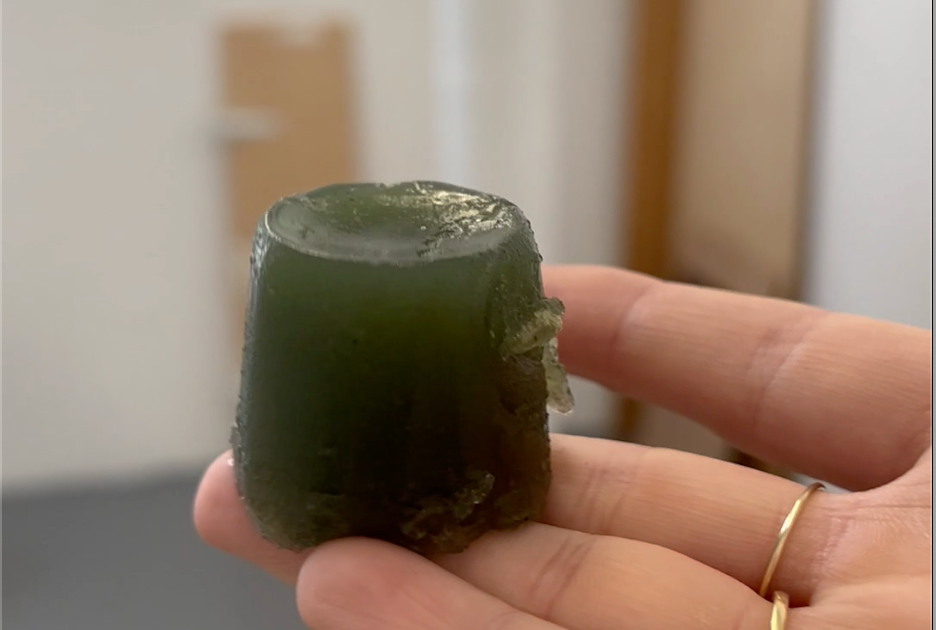Parasites and Poetics
Mckenna Goade • May 2, 2025
Parasites and Poetics: The Instability of Transmission
Several months ago, I wrote the following paragraph as a starting point for discussing my art practice. Reading these words back now, I am recognizing them more as an ironic prophecy. I wrote:
“I carry with me a desire to interface with the more-than-human—there must be some process that can distill meaning down to a particle that can be digested and understood by every being. A way to send a message that you don’t need eyes to read. A message that passes through skin. A message that surpasses electrons’ inability to touch. A message that won’t repel off the veil.
A message that you don’t need to be alive to read.”
As I dissect my own words, I am perplexed by these desires and the intricate ways in which they mirror the desires that other parasitic creatures had toward me in an experience I had this June.
Last month, I walked on the shores of a place I’m having trouble categorizing. In the 1850s, Dead Horse Bay (then called Barren Island) was the site of two horse-rendering plants, fish oil factories, and garbage incinerators. A community of European immigrants and formerly enslaved African Americans worked in these industrial plants and instituted their own governmental system, largely outside the municipal system.
A century later, Robert Moses destroyed thousands of low-income Brooklyn homes to make way for reform projects and highway networks he planned to construct throughout the city. Along with other waste from Manhattan, materials and belongings from these destroyed neighborhoods were transported to this site, compacted, and covered with sand from Jamaica Bay to extend the shoreline. A couple of years later, the landfill was capped (before plastic fully infiltrated community systems), but erosion has released much of that trash, which collects on the bay’s eastern shore.
This shoreline was simultaneously a waste-world and a place where life seemed to thrive. The sand was full of impacted waste from the pre-plastic city. There was an immense calm, and a tranquil sound that echoed when the waves crashed on the discarded, covered, and compacted glass and rusted metal. As I walked, I thought of how I felt bad for the trees soaking up leachate, but I didn’t feel good about the thriving microorganisms under the sand. I was curious about the edges of my empathy. I wondered about the beings that thrive in this place at the expense of other beings. I wondered about the morality of that. I wondered about the ethics of that.
When there, I picked up several “landfill stones” (they resemble giant rocks but are actually formed from compacted waste from the site, essentially the sedimentary rocks of the Anthropocene) and carted them back through the tall grasses that one needs to walk through to reach the bay.
On my return home, I encountered two ticks crawling around my scalp. I’m still not sure if they came from the “stones” or if they leapt from the grasses on my entrance or return.
A third tick revealed themself a week later.
Their smallness made me slow to notice—only little rustles in my hair that caused an itch. And an itch that sent them cascading from the top of my head. Then the panic of realizing something else could’ve been living inside me. I had spent years thinking about porous boundaries, longing to blur the line between myself and the more-than-human world. But this wasn’t metaphor. This could’ve been puncture. Skin breached. Intimacy turned involuntary.
And to think that only a month before, I had desired “a message that passes through skin.”
The ticks reminded me that touch isn’t innocent. In On Touching—The Inhuman That Therefore I Am, Karan Barad dismantles the idea of discrete entities bumping into each other. Instead, touch is a condition of mutual becoming: we are changed by every contact. And the ticks made me think of touch as more sinister. They collapsed the safe conceptual space of “intra-action” into a more bodily reckoning with shared vulnerability. I did not want to be touched like that. I did not want to become-with in that way.
This experience has made me reconsider my relational aesthetics work, That Which is Read by the Body.
The first time I performed this project was also my first meeting with Gregg Bordowitz. I was interested in experiencing him experience the words—and was desperate for his feedback**.
I remember a knock on the wall outside my studio, and poking my head around the corner of my semi-transparent medical curtain to my studio, which I had affectionately labeled my lab. Before any formalities, like introducing myself, I asked.
“Do you have any allergies?”
Confused, but intrigued, he replied, “No?”
I then introduced myself and explained to him that I had made some poems from food-grade food coloring and canned peaches, and asked if he would be willing to participate in a performance with me.
He said yes.
Choosing to engage, he took a seat across from me.
On the table was a note that read:
That Which is Read by the Body is a participatory piece involving the placement and consumption of an edible message. Please read before engaging:
Ingredients & Allergies: Made from food-grade food coloring, agar-agar, and canned peach and pear juice. Do not participate if you have allergies to these ingredients.
Hygiene: Please wash your hands before handling materials.
Consent & Comfort: Participation is voluntary. You are welcome to observe rather than take part.
I reached into a 4”x6” box and pulled out two small envelopes. I handed one to him and held the other in my hands. I told him that I would go first.
I opened the envelope, and inside was a small piece of paper with these words inscribed:
1. Hold the note.
2. Place the words on your tongue.
3. Press. Briefly, and peel away.
4. Show your tongue.
5. Let another read.
6. Listen.
7. Eat the words.
8. Wait for words to dissolve.
Behind this paper was a 2-3 inch yellow-orange semi-transparent material with backward black text. When I placed the material on my tongue, the text transferred, and I stuck my tongue out. Gregg leaned in and read the words:
“I’m not sure
you’re there.”
Then I ate the preserved fruit leather.
Gregg then placed the words on his tongue.
I read:
“I hope.”
Then he ate.
We smiled at each other awkwardly. This is a very weird thing to do with a stranger.
After the experiment, I asked Gregg what his thoughts were. He told me that at first, he was upset that he said yes, and was surprised that he so willingly trusted a stranger, but he loved art so much that he chose to engage. He told me that he was brought to an interesting internal and self-conscious space when he stuck out his tongue. I was also curious about the unspoken indicators that were present, allowing for this kind of trust and intimacy.
Now, with the added context of the ticks, I wonder about reciprocity. I wonder if these kinds of encounters, where I hold so much of the control (where I literally put my words in other people’s mouths), are instances of me being a parasite. I am also thinking about the trust and risk necessary to become one with other beings. This perspective is especially hard-hitting when reflecting on the AIDS epidemic, a topic that Gregg understands deeply as both an individual living with HIV and a dedicated AIDS activist. I am grateful to have been trusted by Gregg and to have received his valuable feedback that day.
My experience with the ticks exposed the limits of my own desire for controlled kinship. I considered how I wanted to touch without being touched back by every being. To approach the more-than-human on my own terms. But as Jane Bennett reminds us in Vibrant Matter, matter acts. Agency does not belong to humans alone; agency circulates across networks of beings and things. The ticks were not symbols. They were agents. Their possible intrusion into my body was not metaphor but metabolism.
This tension—the push and pull between longing and fear, connection and repulsion—undergirds the animacy that runs through materials. As Kyla Wazana Tompkins writes in Deviant Matter, decay is not failure but from. Decay offers a politics of decomposition, of refusing to hold shape for the sake of legibility.
I used to desire a seamless fusion of self and others, but now I hear the noise, friction, and failed attempts. These are not failures but refusals—refusals of smoothness, of resolution. The desire to connect with other beings is not just sentimental—it’s structural, requiring not just attention but risk. To open oneself to the more-than-human is to become vulnerable to intrusion, contagion, transformation, and decay. The ticks reminded me of that. Their mouths, still so small, rewrote the boundaries I thought I was ready to blur.
The mode of sending these kinds of messages has changed since my encounter with Gregg Borowitz. Now, there are two chairs, made of oriented strand board, facing each other, with armrests connected by a small wooden box. One chair reclines, the other is erect—the chairs position bodies in a way to receive and give messages. I also abandoned the instruction text, as I have discovered that video and the design of objects can act as a form of scripting, which I prefer over texts that last. This desire for a scripting that doesn’t rely on the written language stems from my dad’s experience as Senior Product Designer at Apple (as well as his roles in other companies as User Experience Design Lead).
The temporary messages could say any of the following:
I’m not sure
you’re there.
I hope.
I’m scared
I won’t
see you
anymore.
fear makes
my vision
worse.
I can
barely
remember.
Where do
I go
when you
forget?
Last summer
clings to
my tongue
like a
fading pulse.
It hurts
that you
are gone.
The hurt
is where
I hold you.
I won’t
make
something
that lasts.
If works
stay here
they don’t
get to you.
You would’ve
thought this
was funny
penis.
so close
to dissolving
barriers
between
flesh and self
you and me
I remember
I’ll miss you.
Sometimes
I forget
that you
were ever
alive.
I want
to talk
about
to you
Sometimes
I think
you miss
me too.
I remember
when you
knew me.
People
are sick
of me talking
about this.
Talking
about to
you
I wonder
if you’d
like these.
I’m still
the same
I am not.
Why can’t
we talk
anymore?
Whole.
If it
isn’t your
voice
in the wind
a bitter taste
with open eyes
the wind
and rain
erased you.
You whom
I long for
Will you
forget me
too?
Only
know you
from me
My body
never again
remembered
Useless borders.
I tried to
text you
again.
I forgot.
How endless?
A phrase
you try
not to hear
What I
wanted
to say
cure me
of this
void.
walls
of breath
unimaginable
continuum
to be dearer
to dirt
if only,
a collapsing
interface
Language
traces.
to say it
whistling
through
the crevices
in the
net of the
sky
I can’t
trace you
ruins
in
rivers
it’s only
death
unearthed
by language
speaking
from above
a state
of ashes
are you
nearby?
My heart
which should
no longer
feel.
I wanted
to be
one
But not
singular
I felt
I was
a host
Sometimes
I don’t
desire
closeness
Sometimes
closeness
falls
apart
writing
after
goodbye
I’m scared
I’ll run out
of things
to say
I hear you
in my
vocal fry.
Tears break
through
triggers—
like joy.
This time
is engraved
in my flesh.
A unit
of language
followed
by silence.
Like passing
car windows
Glimpses
Do you
see all?
Keep watch
It’s okay
if you
forget.
All flesh
is as
grass
Disappeared
and again
recognized
again.
Repel at
the same time
they are one
fort/da
gone/there
passing through
like the
green in
leaves
there-
colors
and souls
taste like
each other
how many
words are
lost there?
I want to
ask you
anything
can I
live in
words?
writing
questions
not seeking
answers
waiting
waiting
waiting
when I
close my
eyes
I keep seeing.
A well
staring at
the sky.
How confidently
we believe
in our meanings
Every April
he goes
on hospice
and every May
he dies.
I have now conducted this experiment many times since I met with Gregg Bordowitz, and each time, I am surprised by how quickly the words on both the recipient’s own tongues and the tongues of others are forgotten. The language almost magically dissolves on the tongue and from the mind. Even if the text transfers perfectly and is entirely legible to a living audience, the words are never remembered. We get to watch, in real-time, meaning dissolving to language dissolving to words dissolving to letters dissolving to…
There is an interesting safety that comes from this vulnerable act due to the temporary quality of the transfer. I can send the most intimate thoughts without fear of anyone really grasping them, even if the words rest on their own tongues and become one with their bodies. Maybe I’m pointing toward a kind of reading that can only be done from within—the body as a conduit for communication. These words “bury” themselves as an offering. I’m writing for them anyway.
This experiment—this gesture—has become less about crafting messages that penetrate the veil between life and death and more about honoring the instability of transmission itself. To write for, with, and into the more-than-human is not to demand clarity, but to risk distortion, forgetfulness, and refusal. The edible text does not promise understanding or permanence, but instead invites a momentary communion, a glitch of intimacy that decays as quickly as it arrives. I no longer long for perfect intra-action. I accept that language may rot in the mouth, that messages may be intercepted by microbes, wind, or ticks. In this vulnerability lies a kind of ethics—one that does not presume contact will be welcome or safe, but that proceeds anyway, reverently, with the knowledge that to reach across any boundary is to risk contamination.
References
Barad, Karen. “On Touching—The Inhuman That Therefore I Am (v1.1).” Preprint. In Power of Material/Politics of Materiality (English/German), edited by Susanne Witzgall and Kerstin Stakemeier, 2015. Originally published in Differences: A Journal of Feminist Cultural Studies (2012).
Bennett, Jane. Vibrant Matter: A Political Ecology of Things. Durham, NC: Duke University Press, 2010.
Carson, Anne. Eros the Bittersweet: An Essay. Princeton: Princeton University Press, 2023.
Garza, Cristina Rivera. The Restless Dead (cpt) Disappropriation: Writing with and for the Dead. Vanderbilt University Press, 2020.
Pessoa, Fernando. The Book of Disquiet. Translated by Richard Zenith. London: Penguin Books, 2001.
Pizarnik, Alejandra. Extracting the Stone of Madness: Poems 1962–1972. Translated by Yvette Siegert. New York: New Directions, 2016.
Simon, Evan, and Olivia Smith. Dead Horse Bay: New York's Hidden Treasure Trove. ABC News. Accessed May 17, 2025. https://abcnews.go.com/US/fullpage/dead-horse-bay-yorks-hidden-treasure-trove-34504495.
Tompkins, Kyla Wazana. Deviant Matter: Ferment, Intoxicants, Jelly, Rot. New York: NYU Press, 2024.
